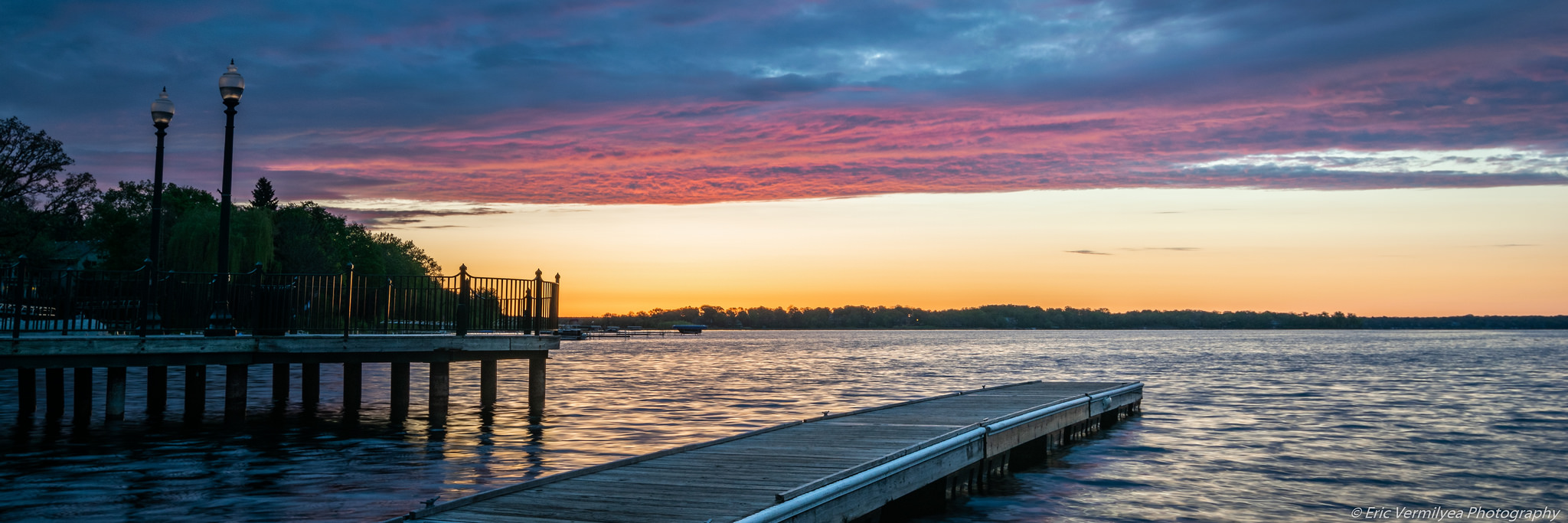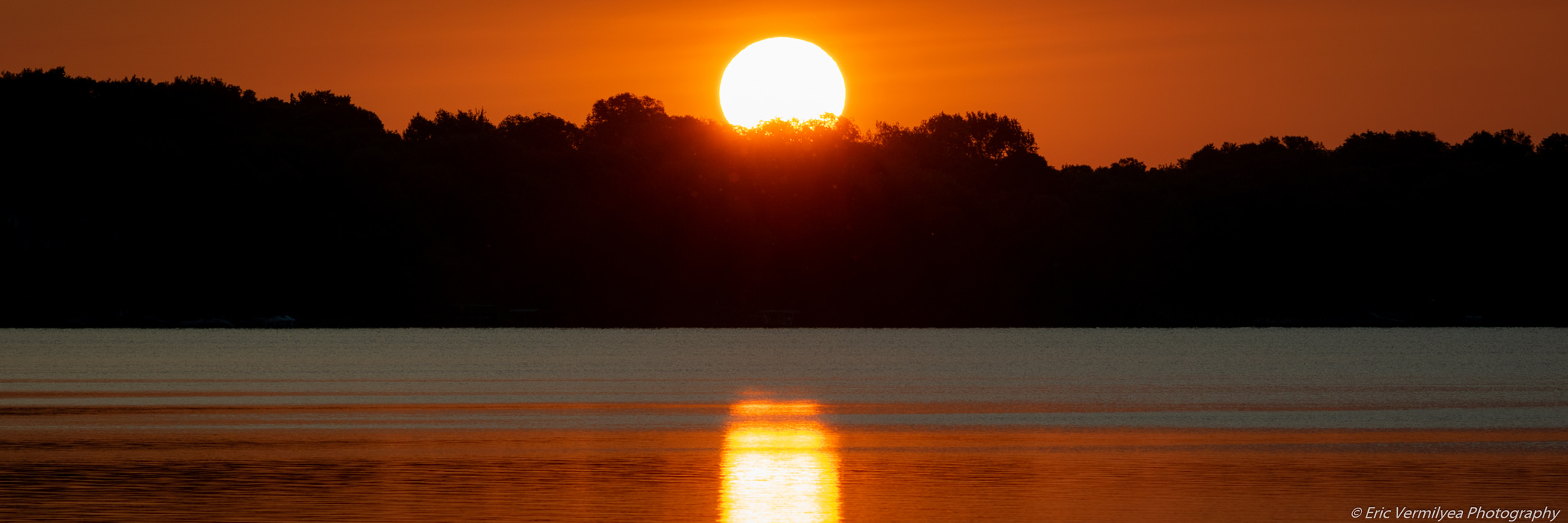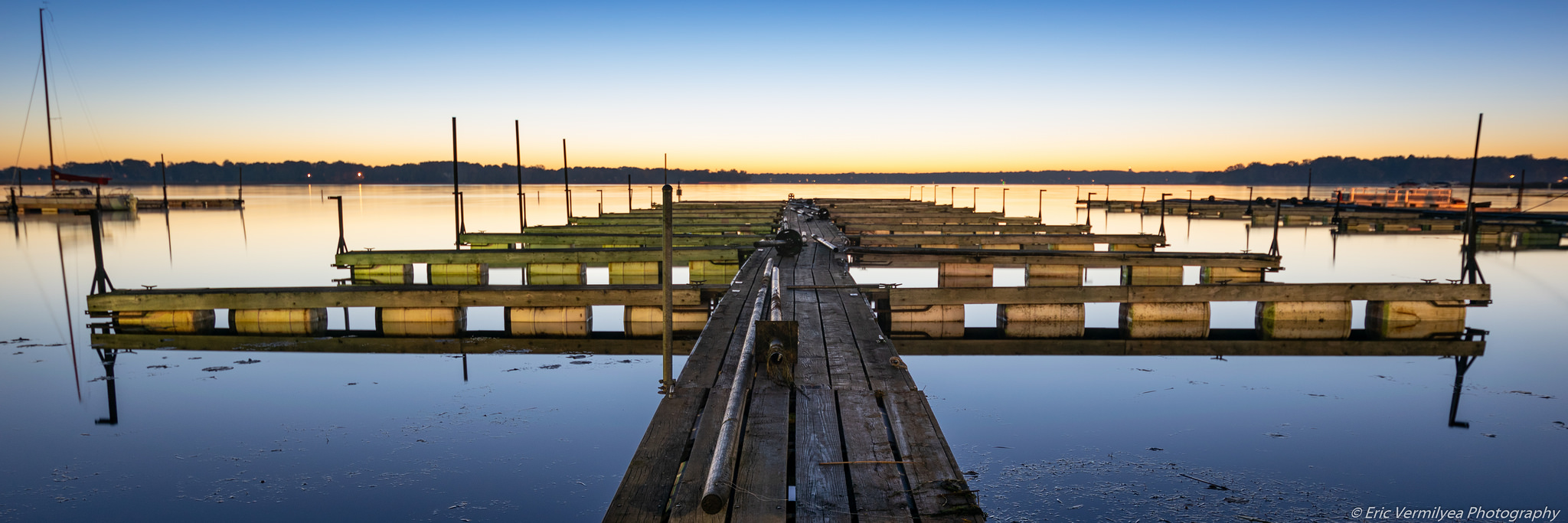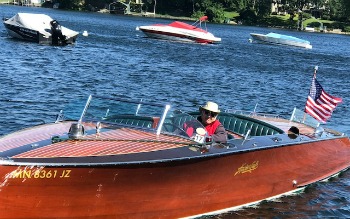WHITE BEAR LAKE CONSERVATION DISTRICT
LAKE MANAGEMENT PLAN
MAY 1999
MANAGEMENT ACTIONS
Management actions in six categories are recommended. The categories are:
- Implementing the Management Plan
- Monitoring and Evaluation
- Information and Education
- Watershed Management
- Protecting the Biological Resource
- Lake Surface Use
In addition to the analysis of specific problem areas that have been identified, other actions are necessary for the comprehensive management of White Bear Lake. The six categories of management action have been organized to best facilitate the systematic, coordinated and effective implementation of this management plan to reach the goals identified by the Advisory Committee.
The types of actions included in this plan include programs, plans and projects designed to satisfy one or more of the goals.
The White Bear Lake Conservation District, by adopting this plan, is demonstrating a commitment to its timely and effective implementation as well as its advocacy role in protecting this beautiful lake.
1. IMPLEMENTING THE MANAGEMENT PLAN
It makes sense that a specific agency be charged with assuring the implementation of this management plan. The White Bear Lake Conservation District is the logical choice because: a) the WBLCD has the statutory authority to implement this management plan, b) the focus of the WBLCD is on the environmental quality of White Bear Lake, and c) the Advisory Committee, after reviewing the management needs for the lake, has concluded that the WBLCD should play a lead role in implementing major parts of this plan.
Charging the WBLCD with assuring the implementation of the management plan means that they will seek to implement the recommended actions either directly through their own programs or by advocating the implementation of management actions by others. For example, the WBLCD would continue to manage lake use through its ordinances, but would advocate implementation of watershed management activities through the authorities of the Rice Creek Watershed District and the respective municipalities in the watershed.
Accepting this charge will probably mean increasing the WBLCD’s administrative duties as well as its program budgets. Because support for the WBLCD comes largely from its member cities - Birchwood, Dellwood, Mahtomedi, White Bear Lake and White Bear Township - their support is critical to the implementation of this plan and the long-term protection of White Bear Lake. In addition, the concerns expressed in the stakeholder survey regarding the leadership and direction of the WBLCD must be addressed. The WBLCD has begun to act on some of these concerns, and by adopting this management plan has committed to act on the remainder.
As the White Bear Lake Conservation considers how best to finance increased activities, they should consider a variety of funding sources and strategies in addition to their support from its member cities.
The White Bear Lake Conservation accepts the lead role in implementing this management plan. The WBLCD recognizes that to do this effectively requires the following:
Action 1a: The WBLCD will seek the support for its member cities and others so that it has sufficient resources to implement this management plan.
The WBLCD will do this by:
- Developing a work plan and budget to implement this management plan.
- Obtaining the financial support to implement the work plan.
- Establishing a formal dialog between the Board and the member cities.
Action 1b: The WBLCD will retain an advisory committee to provide input on the implementation of this management plan.
The main function of the Advisory Committee - not necessarily the same Advisory Committee that developed this plan - is to oversee the implementation and ongoing management of White Bear Lake and to advise the WBLCD as to the effectiveness of management actions and the changing needs of the community for the protection and management of White Bear Lake.
The WBLCD will establish a management plan advisory committee that will:
- Be representative of the White Bear Lake community.
- Meet quarterly.
Further, the WBLCD will support the advisory committee by:
- Providing technical support as needed.
- Providing a forum to receive regular reports.
Action 1c: The WBLCD will amend, revise and update this management plan as necessary.
Based on the results of ongoing monitoring and evaluation (see Action 2a) as well as the recommendations for the advisory committee and others, the WBLCD will amend, revise and update this management plan as necessary.
Ongoing monitoring and evaluation are essential elements of an effective long-term management program. The information gained from monitoring the management actions is used to critically evaluate whether the management activities are effectively addressing the goals, and if not, to evaluate what adjustments might be required.
Action 2a: The White Bear Lake Conservation District, in cooperation with other appropriate agencies, will develop and implement a monitoring and evaluation program to support this management plan.
The WBLCD will do this by:
- Coordinating, gathering and evaluating the monitoring data collected by all available sources.
- Using the monitoring information with the input from the advisory committee to evaluate the management plan’s effectiveness and amend the plan as necessary (see Table 2).
The monitoring and evaluation elements for this plan are listed in the Action Matrix, Table 2.
Certain actions contained in the management plan call for an information/education element. For example, changing behaviors with respect to lake surface use or lawn care practices may be more effectively accomplished through an information/education campaign than through official municipal controls. In addition, general information and education is critical to any comprehensive resource management program.
Action 3a: The White Bear Lake Conservation District, in cooperation with other appropriate agencies, will develop and implement an information/education program to support this management plan.
The WBLCD will do this by:
- Coordinating and evaluating the information and education needs to support this management plan (see Table 2).
- Serving as an information and education clearinghouse.
- Identifying target audiences.
- Cooperating with other agencies and organizations to implement an information and education program to support this management plan.
The information and education elements for this plan are listed in the Action Matrix, Table 3.
Three areas have been identified as concerns stemming from land use and activities in the watershed:
a) pollution from runoff
b) lakeshore development and
c) protecting aquifer recharge areas to minimize future lake level fluctuations.
Pollution in Runoff
The Rice Creek Watershed District relies on local authorities to implement its watershed management plan. The Rice Creek Watershed District has conducted a Diagnostic-Feasibility Study (RCWD 1991) that has identified areas around the lake and the amount of phosphorus pollution they contribute. However, that study did not evaluate the impact of internal phosphorus in White Bear Lake, which is probably a significant source. The Rice Creek Watershed District and the municipalities in the watershed have programs that aim to minimize phosphorus pollution in runoff from existing and future developed areas.
Action 4a: The Rice Creek Watershed District, through its plans, programs and policies, should continue to minimize phosphorus inputs to White Bear Lake.
The RCWD should specifically address the following concerns:
- Implement a program to measure the levels of phosphorus entering White Bear Lake as a way to evaluate the need for and effectiveness of watershed management activities.
- Work with others to develop, implement and evaluate effective community information and education programs.
- Work with municipalities where new developments are planned to either a) prevent additional runoff from entering White Bear Lake, or b) require that the most efficient available technologies be used to minimize phosphorus increases to White Bear Lake.
- Measure the magnitude of internal phosphorus sources in White Bear Lake, then if found to be excessive, implement control measures. This should be done in cooperation with the White Bear Lake Conservation District.
- Work with municipalities and the WBLCD to implement phosphorus fertilizer ordinances.
Unlike phosphorus, we are largely ignorant regarding the levels of other kinds of pollution being delivered to White Bear Lake in runoff as well as the effects of other kinds of pollution in the lake. While we know that many of these kinds of pollution are mitigated using standard watershed management techniques and we have no indication that there are specific problems in White Bear Lake, it makes sense to identify which kinds of pollution are of concern, measure their levels in runoff and in the lake, and evaluate their impact before any remedial actions are implemented.
We are aware of three specific pollutants that ought to be further investigated - nitrogen, mercury and chloride. Nitrogen in the lake sediments is important for determining the distribution of Eurasian watermilfoil. McComas and Stuckert (1998) found that nuisance abundances of milfoil were found growing in lake sediments that were high in nitrogen. It is therefore important to determine the source of nitrogen to be able to evaluate whether it can be effectively mitigated. Similarly, we know that some fish in White Bear Lake are contaminated with mercury (MDH 1998). Understanding what portion of the mercury comes from runoff is critical to evaluating whether it can be mitigated. Finally, the source and likely impacts of chlorides should be identified.
Action 4b: To the extent practical, the Rice Creek Watershed District should identify, and if necessary, mitigate the impact of non-phosphorus pollution to White Bear Lake.
As the RCWD implements this action, they should:
- Design and conduct a monitoring program to evaluate the levels of non-phosphorus pollution like hydrocarbons, heavy metals, herbicides and pesticides, other nutrients, salts, sediments, synthetic chemicals, pathogens, and organic debris.
Lakeshore Development
The Advisory Committee has discussed the issue of activities in the Commercial Bay and adjacent land activities. The Committee has not been able to come up with objective criteria to evaluate to what extent the number of boats moored in the Commercial Bay presents a burden on White Bear Lake. Without some additional information, it is difficult to provide guidance for the use and development adjacent lakeshore lands.
The Advisory Committee as well as respondents to the survey have indicated a need for a more comprehensive vision and plan for the entire Commercial Bay - land and water - as a way to balance taking full advantage of the lake’s value to the community while at the same time protecting it for future generations.
Action 4c: The City of White Bear Lake should work with the White Bear Lake Conservation District and others in the community to develop and implement a comprehensive vision and plan for the Commercial Bay - both land and water aspects.
This should be done following the lake use study recommended in Action 6b.
Lake Level
It is neither practical nor feasible to further consider lake level augmentation using water pumped from the groundwater aquifers. However, there is a concern that future urbanization and concomitant groundwater withdrawals represents a threat to White Bear Lake levels, especially in dry years.
Action 4d: The White Bear Lake Conservation District, the MN DNR and local units of government in the critical recharge areas should develop and implement a plan to protect the levels of aquifers critical to White Bear Lake levels.
5. PROTECTING THE BIOLOGICAL RESOURCE
The biological resource considered here includes the fisheries, aquatic plants, exotic species and shoreline vegetation in White Bear Lake.
Fisheries
The MN DNR is responsible for the overall management and protection of the fishery. Their fishery lake management plan (MN DNR - Fisheries 1995) has an operational plan that calls for:
- Annual fish house counts
- Annual stocking of muskellunge by private sector
- Lake survey in 1999 and every five years
- Annual stocking of walleye fingerlings
- Encourage the removal of underutilized fish species
- Protect centrachid spawning by environmental review process
- Work with watershed district on water quality problems
There is also a potential plan (a DNR ‘wish list’) that includes:
- Additional fishing pier (estimated cost is $10,000)
- Development of additional 30 car/trailer spaces (estimated cost is $100,000)
- Special regulations to restrict harvest of largemouth bass & walleye
Action 5a: The Minnesota Department of Natural Resources should continue working to implement its fisheries management plan.
Aquatic Plants (including Eurasian watermilfoil)
White Bear Lake has a healthy native aquatic plant community that includes Eurasian watermilfoil. The Advisory Committee has agreed that the WBLCD should implement appropriate aquatic plant protection and control measures in the offshore areas of the lake and coordinate the overall management strategy in White Bear Lake. All aquatic plant management activities are subject to the permitting authority of the MN DNR.
Action 5b: The White Bear Lake Conservation District will coordinate the overall protection and management of aquatic plants in White Bear Lake.
The WBLCD will do this by:
- Annually developing and implementing an aquatic plant protection and control strategy. The plan should balance reasonable control, the pros and cons of all available methods, while also minimizing impacts to the human and natural environment. The WBLCD will accomplish this by:
? Delineating the offshore areas of White Bear Lake that would be subject to WBLCD control activities.
? Conducting a lake-wide aquatic plant survey.
? Developing and implementing an information/education program to coordinate the overall protection and control of aquatic plants.
? Acting on the annual management strategy no later than April.
? Negotiating the use of bottom barriers with the MN DNR on behalf of all parties.
- Annually preparing a report on the results of aquatic plant protection and control activities, the status of the lake’s aquatic plant communities, and recommendations for future protection and control activities.
Other Exotic Species
There are other exotic species, like zebra mussel, that could infest White Bear Lake. Neither the likelihood nor the impact of an infestation of other exotic species have been specifically evaluated for White Bear Lake. The MN DNR has a substantial and established program intended to limit the spread of exotic species, like zebra mussel, to bodies of water that do not have them (MN DNR - Exotic Species Program 1998). However, there is no plan or program in place to specifically prevent the introduction and infestation of other exotic species to White Bear Lake.
Action 5c: The White Bear Lake Conservation District should, in cooperation with the Minnesota Department of Natural Resources and others, identify the threats of other exotic species introductions and implement programs to prevent those species from entering White Bear Lake.
Lakeshore Vegetation
Lakeshore vegetation is critical to maintaining a healthy, diverse and stable lakeshore environment. Specifically, lakeshore vegetation can help reduce shoreline erosion, provide wildlife habitat and provide aesthetic benefits. Aquascaping is a method that is used to design a more natural transition between land and water vegetation. There are numerous resources available to assist lakeshore owners in protecting and restoring lakeshore vegetation (Dindorf 1993; Henderson et al. 1999).
Action 5d: The WBLCD in cooperation with others will develop and implement education/information materials for riparian owners to encourage the protection and restoration of the lakeshore vegetation.
There are concerns with high boat numbers, hours of operation, excessive boat speed and noise, inadequate enforcement of ordinances, and a general lack of courtesy on White Bear Lake. All of these factors are inconsistent with a desire for increased safety and quietude on the lake. Managing surface use conflicts and nuisances is made difficult by a lack of objective information, imprecise language of ordinances, and the inadequate enforcement and user awareness of ordinances.
Public Access
The only public access to White Bear Lake is located at the Ramsey County Beach. This access is designed to accommodate 37 car/trailer units. However, during busy times, a large number of people use local streets for parking which causes congestion at both the streets as well as the boat ramp. More public access is needed to relieve parking congestion.
Action 6a: The Minnesota Department of Natural Resources, along with its planning partners, should continue to seek, acquire and develop public access to White Bear Lake to its goal of 121 car-trailer spaces, unless this is contrary to the recommendations from the lake use study (Action 6b).
Lake Use
There are concerns regarding the balance of watercraft types and access points as well as the use of the Commercial Bay. However, there is inadequate objective information on lake use and user needs to resolve these concerns.
Action 6b: The White Bear Lake Conservation District will commission a lake use study in 1999.
The lake use study will be consistent with the Advisory Committee recommendation that:
The WBLCD commission a study of total lake use, including the Commercial Bay (for example, how many boats, boat size and use of the lake). Further, the study should include the impact of boats on the quality of the lake. A public survey should be included asking people what they think is the right mix of boats for lake use.
Noise
The current noise ordinance of the WBLCD is vague and not practically enforceable. Also, the minimum wake ordinance is inadequate with respect to noise concerns.
Action 6c: The White Bear Lake Conservation District will amend its noise ordinance to not allow any watercraft to exceed 80 dB at a distance of 50 feet. The WBLCD will also amend those ordinances calling for minimum wake zones to increase them to 200 feet.
The WBLCD will amend their ordinances to be effective during the 1999 boating season.
Winter Operation
There are concerns with winter uses of White Bear Lake too. These concerns require additional information and consideration.
Action 6d: The WBLCD will review, and if necessary, amend its winter use ordinances following the recommendation s from the lake use study (Action 6b).
Enforcement
Boater awareness as well as enforcement of WBLCD ordinances can be improved.
Action 6e: The White Bear Lake Conservation District will, in cooperation with the Ramsey and Washington County Sheriff’s Departments, more actively enforce its use lake use ordinances (such as speed limits, minimum wake zones, hours of operation and noise). This effort will also include an educational element.











